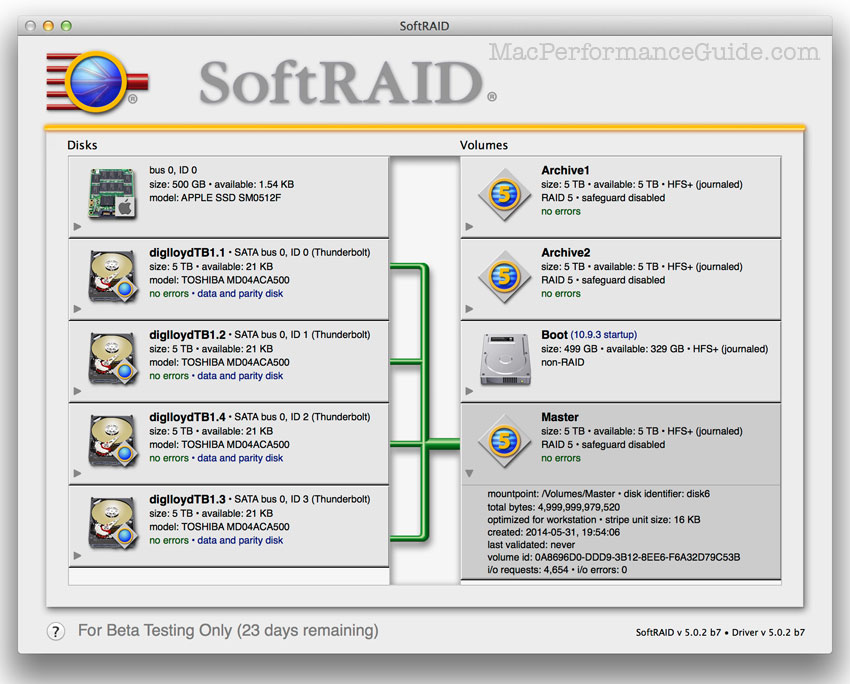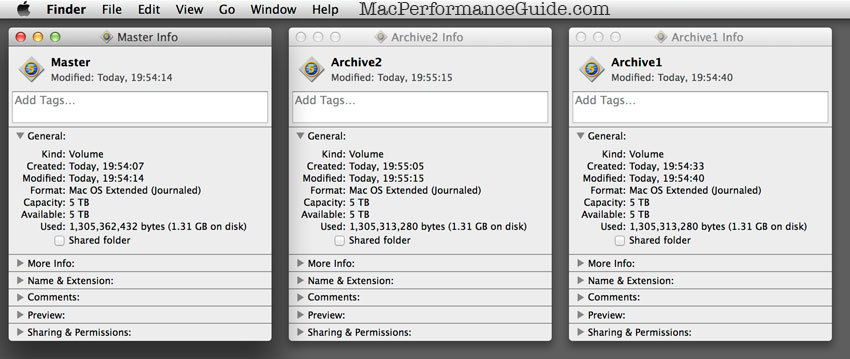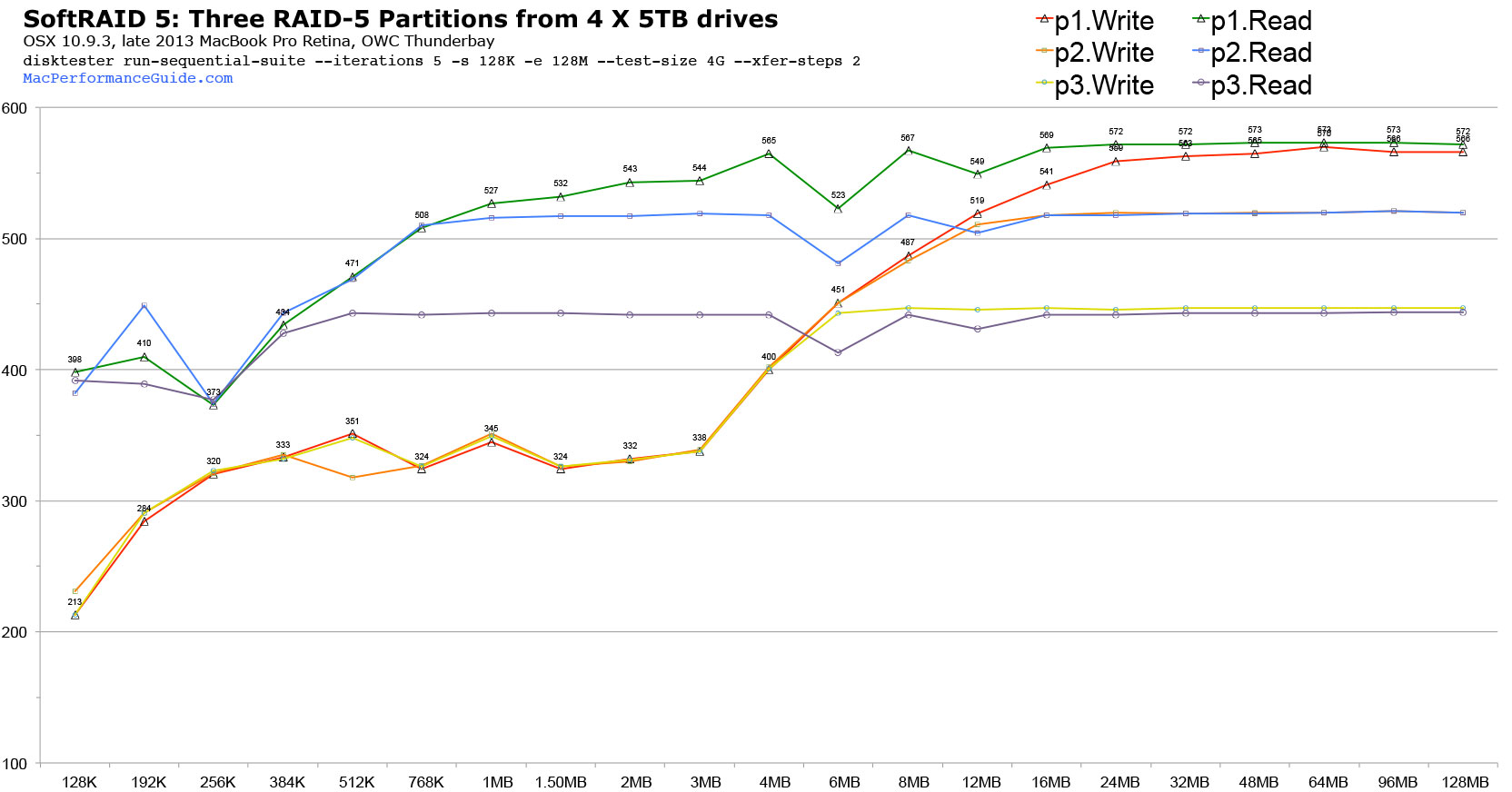
$220 SAVE $130 = 37.0% Western Digital 16.0TB Western Digital Ultrastar DC HC550 3.5-in… in Storage: Hard Drives
|

|

|

|

|

|

|

|

|

|
RAID-5 / RAID-4 Can be Partitioned to Suit
Related: backup, Other World Computing, RAID, RAID-1, RAID-4, RAID-5, SoftRAID, storage, Thunderbolt, video, weather events
A RAID-5 or RAID-4* setup is not restricted to one huge volume; it’s perfectly fine to create more than one volume to suit one’s needs. SoftRAID makes it trivial to create such partitions regardless of the type of RAID (or non-RAID).
* RAID-4 offers the same fault tolerance characteristics as RAID-5, but sometimes has better performance.
As shown below, four 5TB drives in an OWC Thunderbay enclosure have been used to create three 5TB volumes instead of one 15TB single volume: Master, Archive1, Archive2. It could just as well have been 4TB each. This approach can serve important goals:
- The first partition will be the fastest one, thus guaranteeing high speed.
- All partitions will be MUCH faster tha a single drive / single volume or RAID-1 mirror approach.
- Partition size can be matched to the capacity of external backup drives, e.g. for cloning as a backup strategy.
- Explicit and unambiguous organization of files for backup and search, e.g. Master for more recent work with Archive1 and Archive2 for older material for faster and more targeted backup, as well as optimizing speed for current work (volume Master being fastest).
While not necessarily sensible, one could have made a RAID-5 for Master, a RAID-1+0 for Archive1, and a RAID-1 mirror for Archive2! There is no restriction on the flexibility.
Taking the 3-partition case, when a drive should fail, all three partions will be protected but running in “Degraded” state. Replacing the failed drive will rebuild all in turn. Compare that to a single-drive setup (slower and loss of volume), RAID-1 mirror (slower but no more fault tolerance), or RAID-0 stripe (slightly fasterm but loss of volume). The partitioned setup


Performance implications
Shown below are the three partitions. The fastest partition (green + red lines) is indeed much faster than the slowest partition (yellow + purple), but only modestly faster than the middle partition.

Seagate 22TB IronWolf Pro 7200 rpm SATA III 3.5" Internal NAS HDD (CMR)
SAVE $100

 diglloydTools™
diglloydTools™

